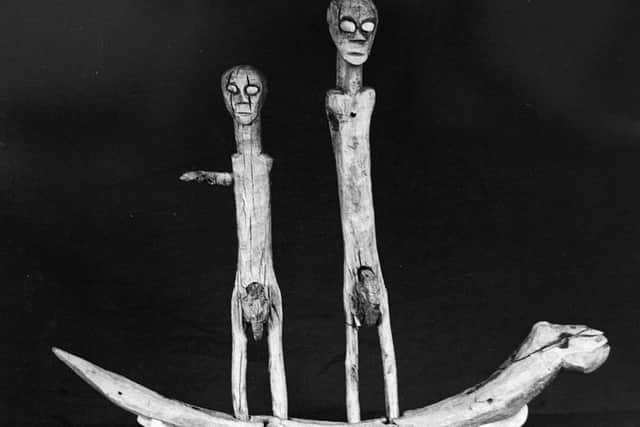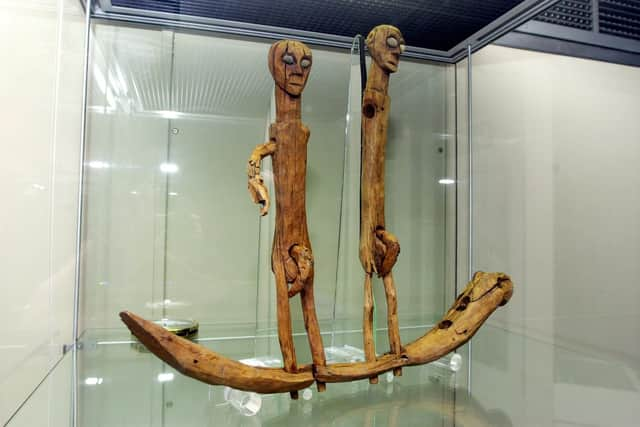Mysterious wooden figures with stone eyes found in Yorkshire ditch go on display at British Museum
The Roos Carr images are around 2,600 years old, placing them in the Late Bronze Age or Early Iron Age.
Experts believe the five figures, which can normally be seen at the Hull and East Riding Museum, represent votive offerings of some kind, perhaps gods or ancestor figures.
Advertisement
Hide AdAdvertisement
Hide AdFound by labourers digging at Roos in 1836, they were preserved by airless waterlogged conditions six feet down in a bed of blue clay.


The workmen reported finding the “warriors” - made of yew and with quartzite eyes -. along with a wooden box, a serpent-headed boat and various other wooden articles “too much decayed to remove”.
Four figures with what seemed to be arms, paddles and shields were given to the Hull Literary and Philosophical Society and eventually became part of the Hull Museums collection.
A fifth figure was acquired by the museum in 1902 - it had gone astray as one of those present at the dig had given it to his daughter as an “ancient doll”.
Advertisement
Hide AdAdvertisement
Hide AdCurator Neil Wilkin said the figures were among his favourite artefacts in the show.


They came from a period associated with increasing conflict and weaponry, across the country and Europe, and the figures were accompanied with small round shields, similar to those found in digs in Britain and Ireland.
He said: “We talk a lot about ritual and votive objects. They have striking faces and don’t feel like toys - they feel like something designed to make a point.”
The figures had removable genitalia and so could be either male or female.
Advertisement
Hide AdAdvertisement
Hide AdOther local loans include the recently revealed Burton Agnes chalk drum, found in the grave of three children, as well as three other chalk drums from another child’s grave at nearby Folkton, in 1893.
The exhibition which runs until July 17, has had rave reviews, with The Guardian describing it “as magical as a great barrow full of glinting treasure”. One of the stand out exhibits is Seahenge, a wooden monument that recently emerged after millennia from the sands of a Norfolk beach.
Comment Guidelines
National World encourages reader discussion on our stories. User feedback, insights and back-and-forth exchanges add a rich layer of context to reporting. Please review our Community Guidelines before commenting.